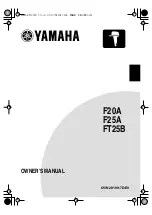
www.ti.com
2.2
RX Operation
3
Physical Description
Physical Description
1. Set TR (J13) to logic 0.
2. Set PA_A SEL (J10) to logic 0.
3. Connect a differential LO source to the LOP/LON SMAs (or use an external balun).
Set the LO to an appropriate frequency, with the power level between 0 to +4 dBm. Remember that for
A-band operation, the LO input frequency is doubled inside the TRF2436; so, the LO should be set to
half the frequency desired at the mixer LO port.
4. For mixer stage measurement:
a. Terminate RFA (J9) and RFANTA (J6) into 50
Ω
.
b. Connect an RF source to MFA (J8). Set to a desired RF frequency and typical power level
of –20 dBm.
c. Connect a spectrum analyzer to the IF (J7) output.
d. Turn on the 3.3-V power supply (~90 mA).
e. Observe the IF output on a spectrum analyzer (374 MHz).
5. For LNA stage measurement:
a. Terminate IF (J7) and MFA (J8) into 50
Ω
.
b. Connect an RF source to RFANTA (J6). Set to a desired frequency and typical power
level of –40 dBm.
c. Connect a spectrum analyzer to RFA (J9).
d. Turn on the power supply.
e. Observe the LNA output on a spectrum analyzer.
f.
Use jumper J14 (RXDGC) to select between LNA high (pins 2-3) and low gain (pins 1-2)
modes.
This section describes the physical characteristics and PCB layout of the EVM and lists the components
used on the module.
SLWU038 – August 2006
TRF2436EVM
3
Submit Documentation Feedback





























